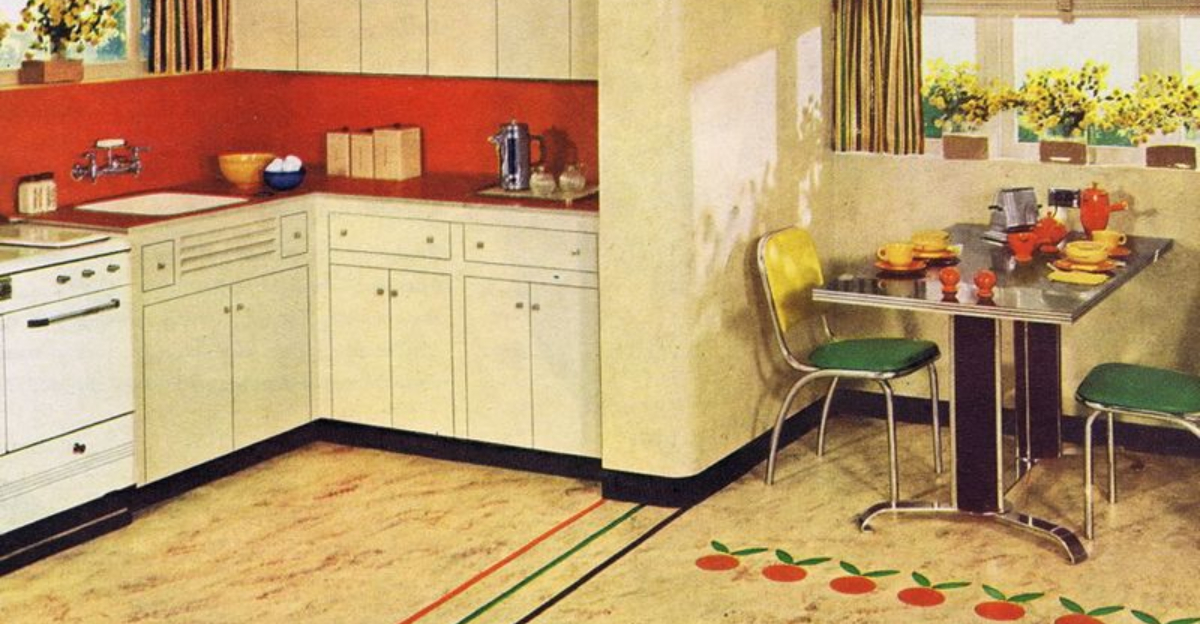Remember walking into a typical American home a few decades ago? The interior design choices of yesteryear created a distinctive aesthetic that defined an era.
From quirky color schemes to functional features that have since disappeared, these household staples capture the essence of American domestic life before the new millennium arrived.
1. Wood Paneling on Basement or Den Walls

Dark, grooved sheets of wood-like material covered countless basement and den walls across America. Homeowners embraced this warm, masculine look for entertainment spaces and man caves.
Installation was relatively easy compared to drywall, making it a DIY favorite among weekend warriors. The textured surface added depth to rooms while hiding wall imperfections.
2. Avocado Green and Harvest Gold Appliances
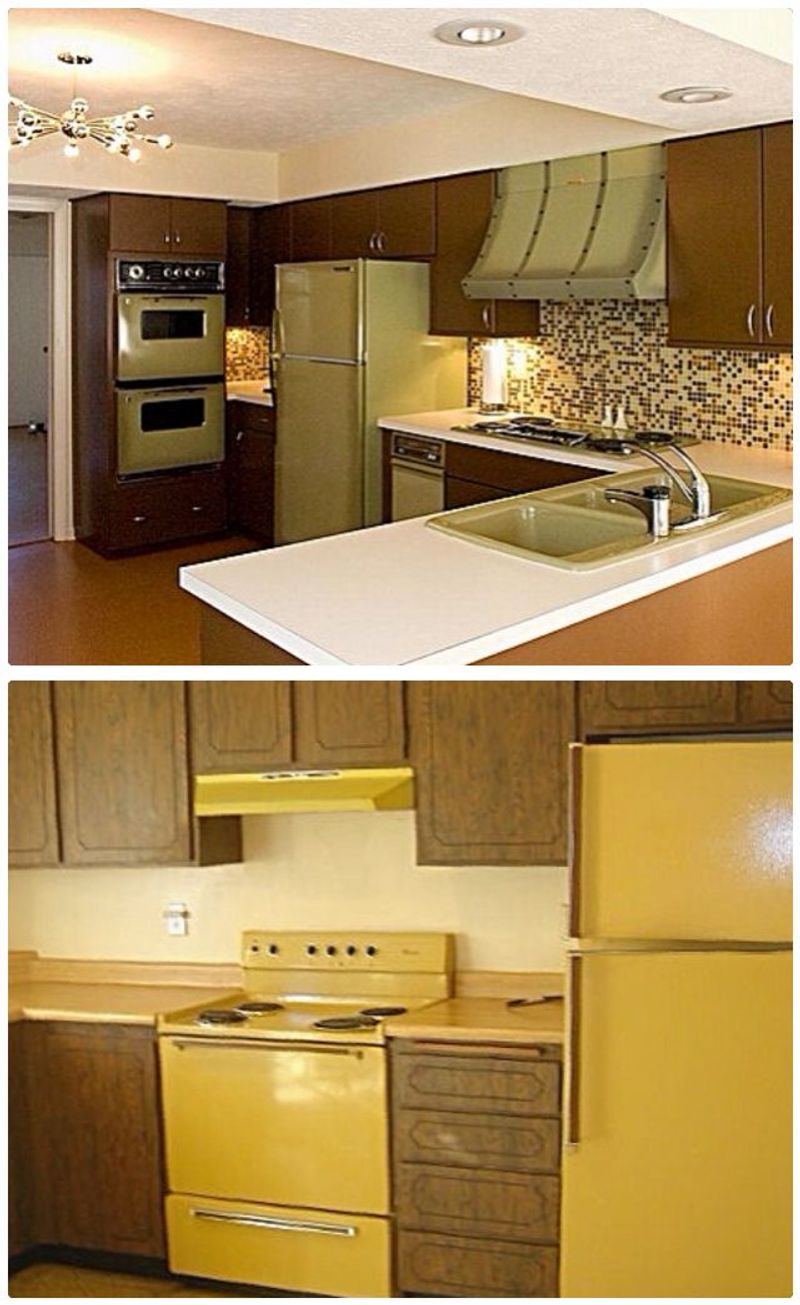
Kitchens nationwide sported refrigerators, stoves, and dishwashers in eye-catching avocado green or harvest gold. Moving away from sterile white appliances, families embraced these bold color choices as statements of modern living.
Matching sets were particularly desirable, creating a coordinated look that screamed sophistication. Some adventurous homeowners even installed color-coordinated sinks and countertops to complete the ensemble.
3. Popcorn Ceilings in Nearly Every Room
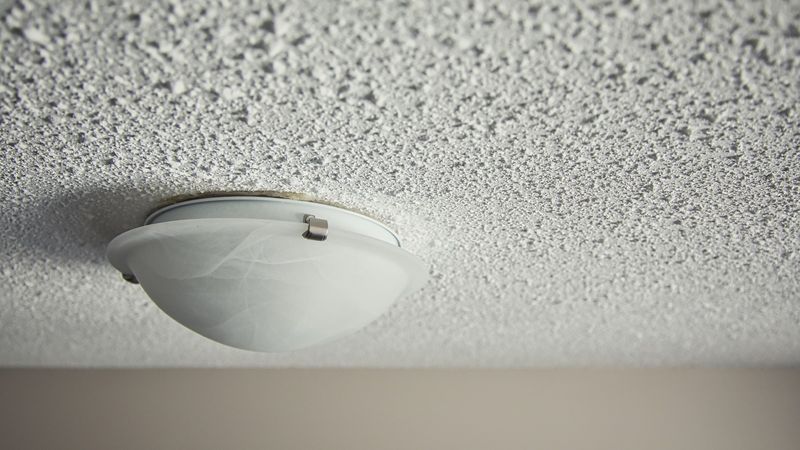
Looking upward in most American homes meant seeing textured “cottage cheese” ceilings sprayed with white acoustic material. Beyond aesthetic appeal, these bumpy surfaces helped dampen sound between floors and hide imperfections in ceiling construction.
Applied with specialized spray equipment, popcorn texture often contained asbestos until the late 1970s. Homeowners appreciated how the uneven surface reduced the need for perfect drywall finishing.
4. Glass Block Windows in Bathrooms and Basements
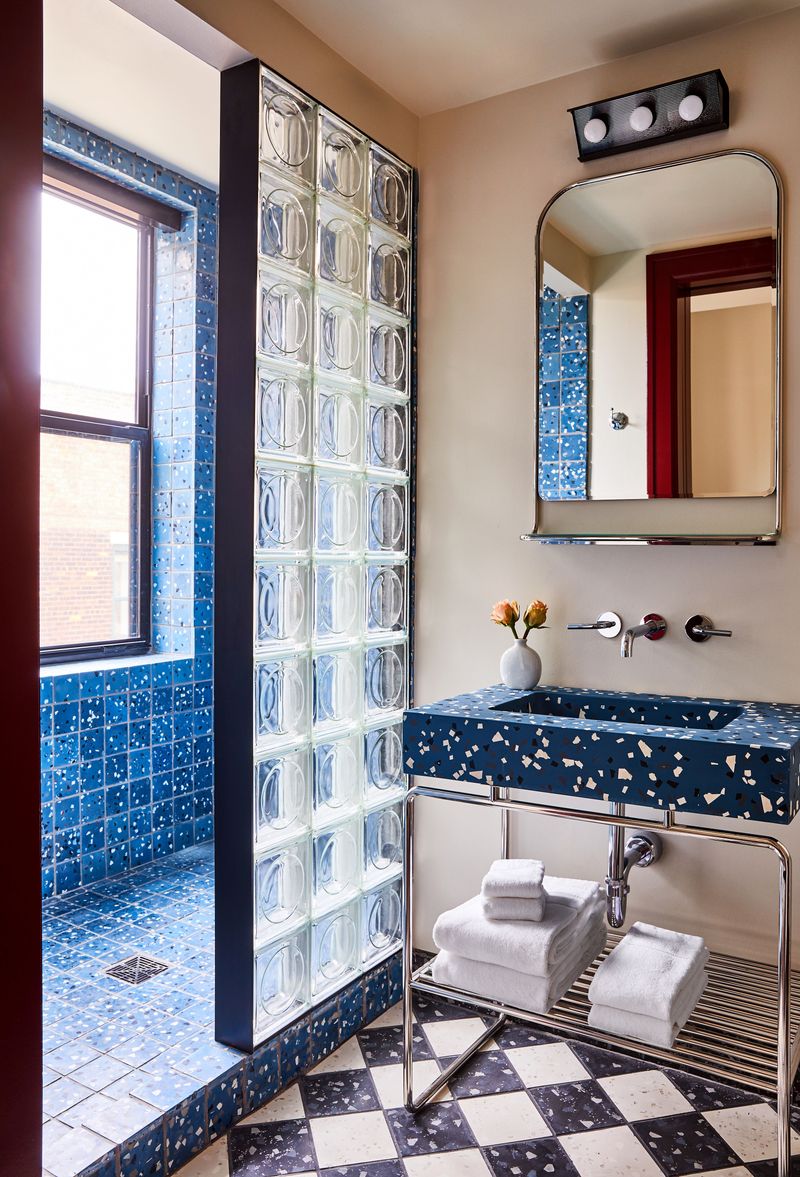
Squared chunks of translucent glass formed distinctive windows that provided privacy while still allowing natural light to filter through. Architects and builders loved incorporating these functional art pieces into bathroom designs and basement walls.
Durable and virtually maintenance-free, glass blocks offered superior insulation compared to standard windows. Many homeowners appreciated how impossible they were for potential intruders to break through.
5. Vertical Blinds on Sliding Glass Doors
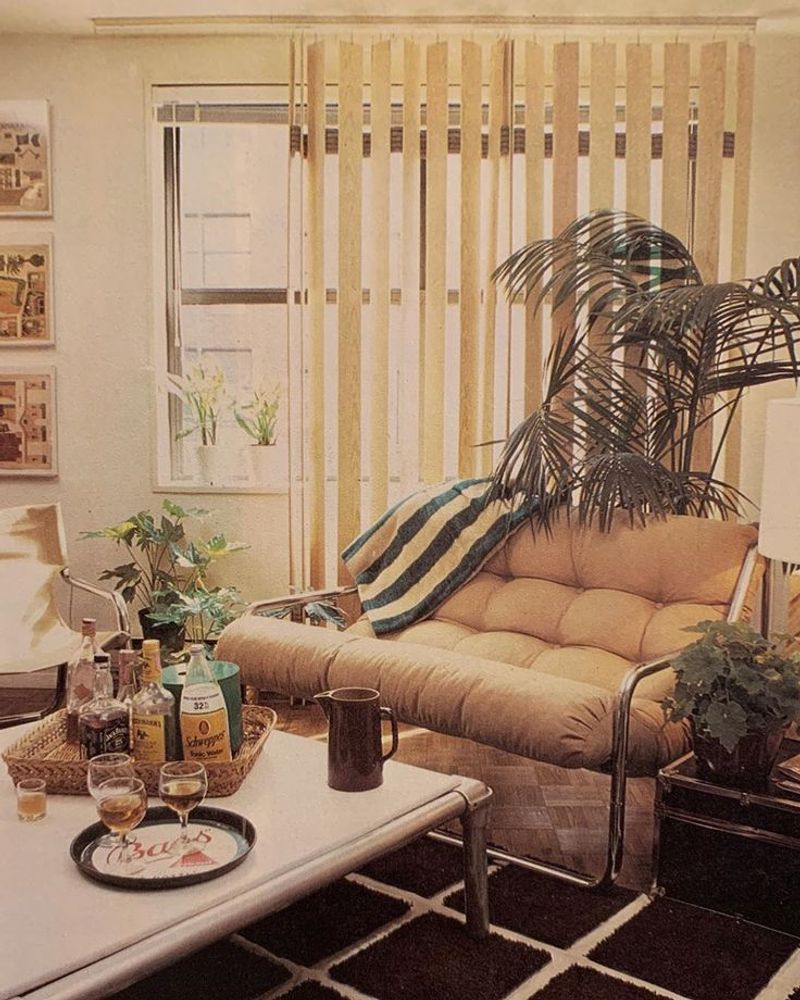
Long plastic or fabric slats hung from tracks above sliding doors, swinging gently with every breeze. Homeowners could adjust the angle for privacy or light control with a simple twist of a wand.
Available in neutrals like beige and white or bold colors matching room decor, vertical blinds defined patio door treatments. When fully opened, the slats stacked neatly to one side, maximizing the view outside.
6. Patterned Linoleum Floors in Kitchens
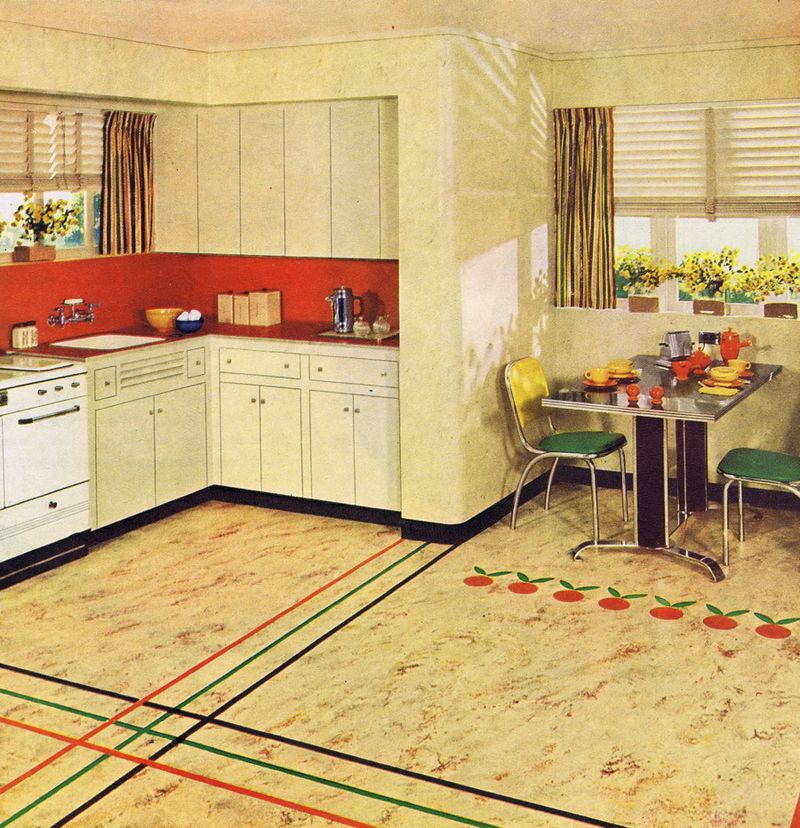
Vinyl flooring featuring faux brick, geometric designs, or floral patterns graced kitchen floors across America. Affordable and practical, these resilient surfaces withstood spills, dropped dishes, and heavy foot traffic.
Homeowners could choose from an array of patterns to complement their decor style. Cleaning required minimal effort – just a quick mop with soapy water kept these floors looking fresh despite whatever kitchen disasters occurred.
7. Built-in Intercom or Radio Systems
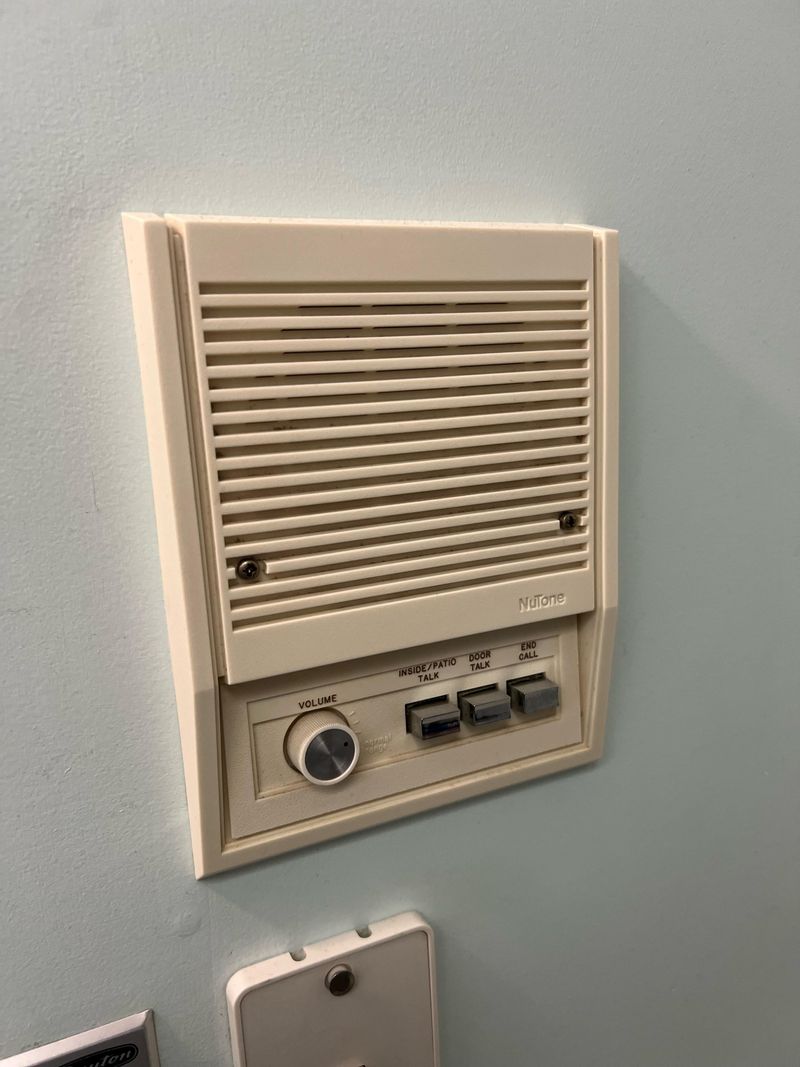
Wall-mounted speaker systems allowed family members to communicate between rooms without shouting or walking. Upscale homes featured master control panels typically installed in kitchens, with satellite speakers throughout bedrooms, bathrooms, and even patios.
Many systems included AM/FM radio functionality, filling the house with music at the touch of a button. Parents particularly loved using intercoms to call children for dinner without leaving the kitchen.
8. Floral or Fruit-Themed Wallpaper Borders
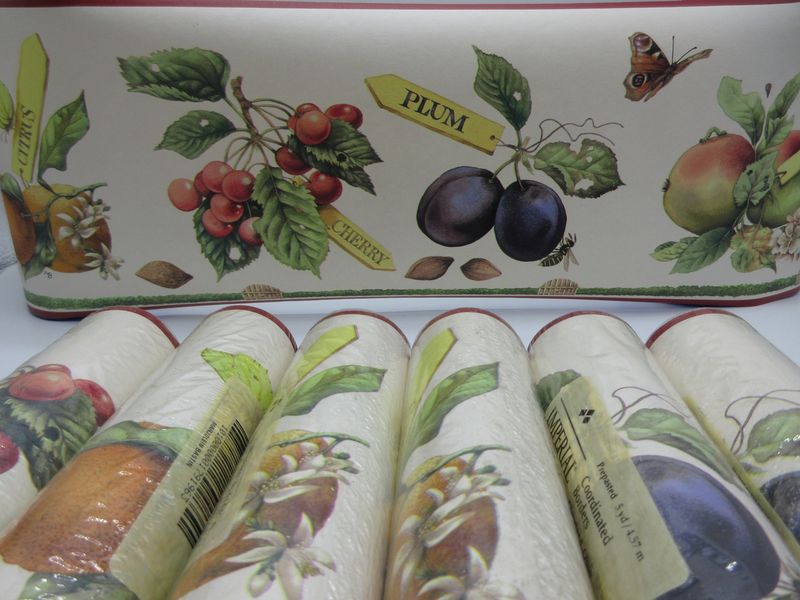
Strips of decorative paper featuring apples, grapes, or country flowers ran along the tops of walls nationwide. Kitchens commonly showcased fruit motifs while bedrooms and bathrooms leaned toward floral designs.
Easy to install without committing to full wallpaper coverage, borders added visual interest to otherwise plain walls. Coordinating with curtains, dish towels, and other accessories, these borders tied room themes together with minimal investment.
9. Ruffled Curtains and Matching Valances
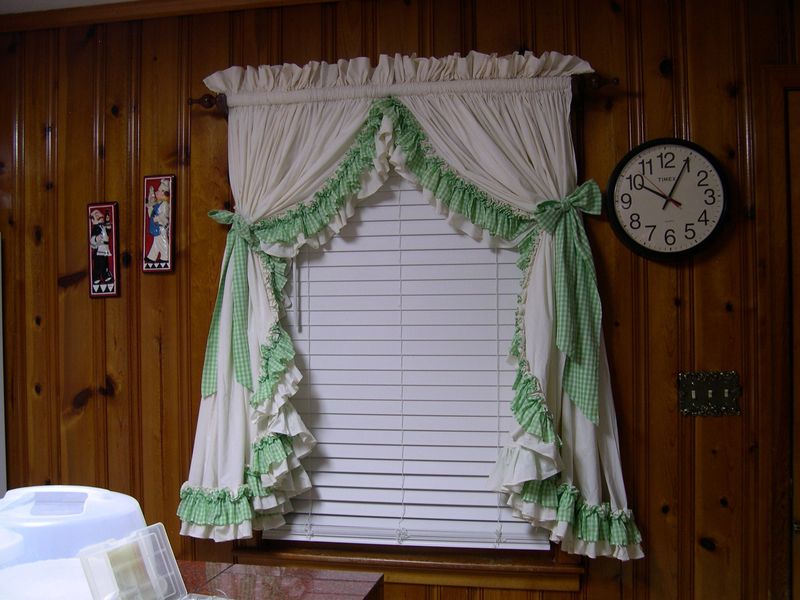
Windows dressed in layers of fabric with gathered edges framed views in homes across America. Country-style decorating embraced this feminine look, often featuring small floral prints or gingham checks.
Coordinating valances topped the window treatment, hiding curtain rods while adding extra decorative flair. Living rooms might feature more formal versions with swags and jabots, while kitchens displayed simpler café curtains with ruffled edges.
10. Conversation Pits or Sunken Living Rooms
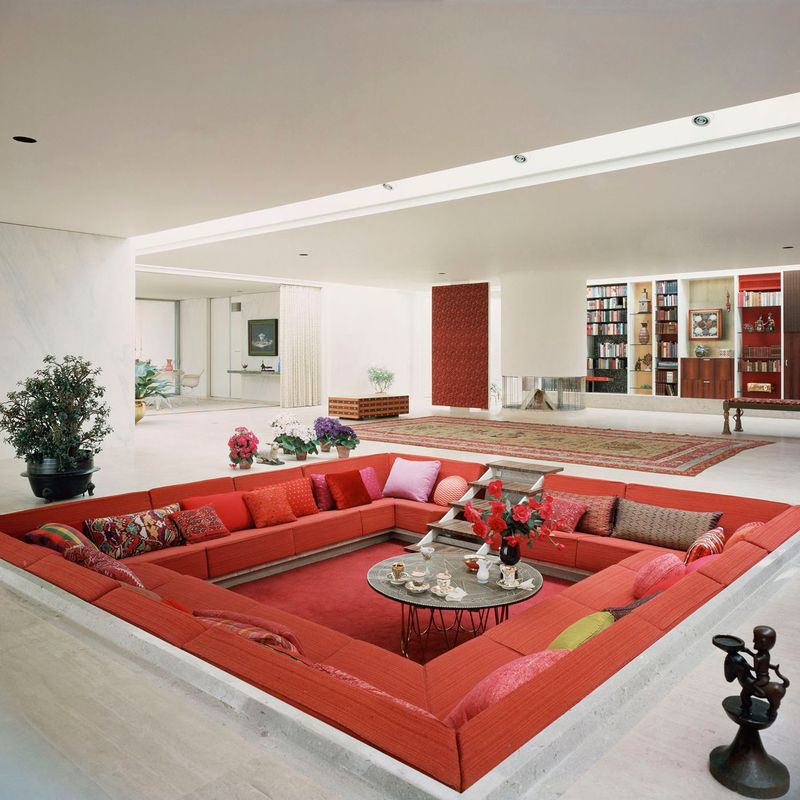
Stepping down into a recessed seating area marked the height of entertaining sophistication. Built-in sofas surrounded a central coffee table, creating an intimate gathering space for guests.
Popularized in the 1970s, these architectural features encouraged face-to-face interaction before smartphones and tablets. Often accompanied by nearby wet bars or fireplaces, conversation pits represented the ultimate space for cocktail parties and casual get-togethers.
11. Mirrored Closet Doors and Accent Walls

Reflective surfaces dominated bedrooms as sliding closet doors featured full-length mirrors that visually expanded spaces. Homeowners appreciated the practical benefit of checking outfits without needing separate full-length mirrors.
More ambitious decorators installed mirrored tiles on entire accent walls, especially in dining rooms. Disco-inspired homes sometimes featured smoked or bronze-tinted mirror surfaces for added drama and that coveted nightclub atmosphere.
12. Lace Doilies on Side Tables and Armrests
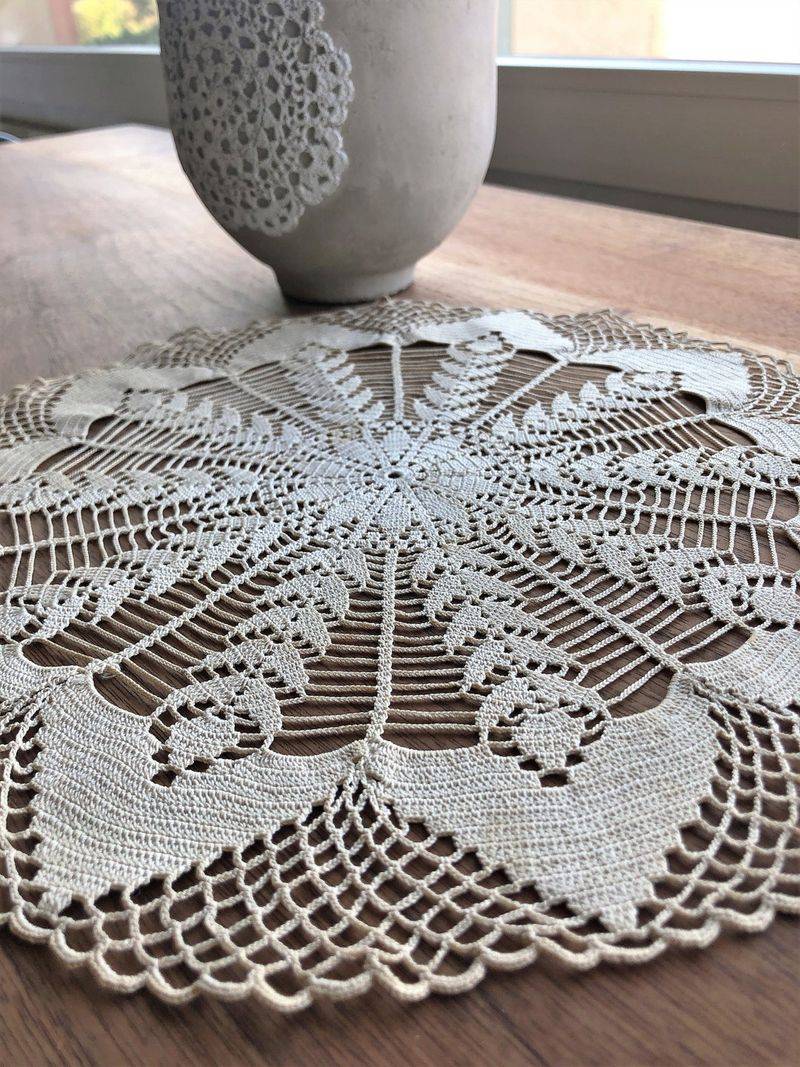
Delicate white or ecru crocheted fabric pieces protected furniture surfaces in grandmothers’ homes everywhere. Placed under lamps, figurines, or family photos, doilies added a touch of old-world elegance to living rooms and bedrooms.
Handmade versions were prized family heirlooms passed down through generations. Machine-made alternatives became widely available for those without crafty relatives, allowing anyone to achieve that proper, traditional look.
13. Wall-to-Wall Carpeting, Even in Bathrooms
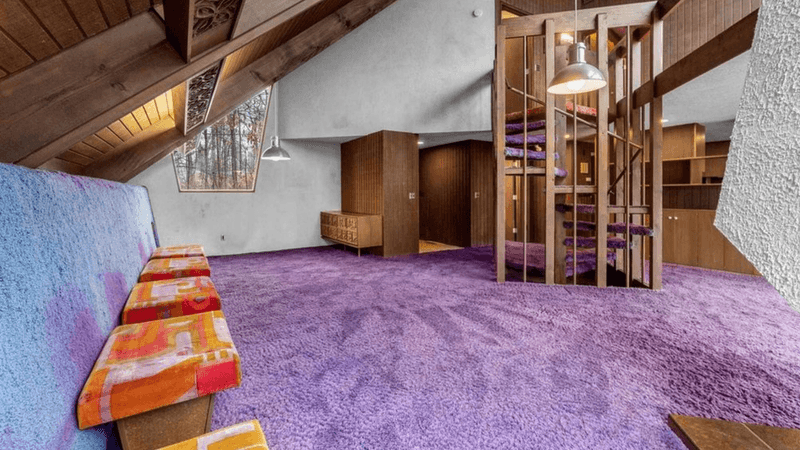
Plush synthetic fibers covered floors from edge to edge in virtually every room of the house. Colors ranged from neutral beiges to bold blues, greens, and even bright reds depending on the decade and homeowner’s taste.
Bathrooms featured special moisture-resistant carpeting around toilets and sinks. Padding underneath added luxurious squish to every step, though spills and stains became permanent decorative features after enough time passed.
14. Oversized Entertainment Centers with Space for VHS Tapes
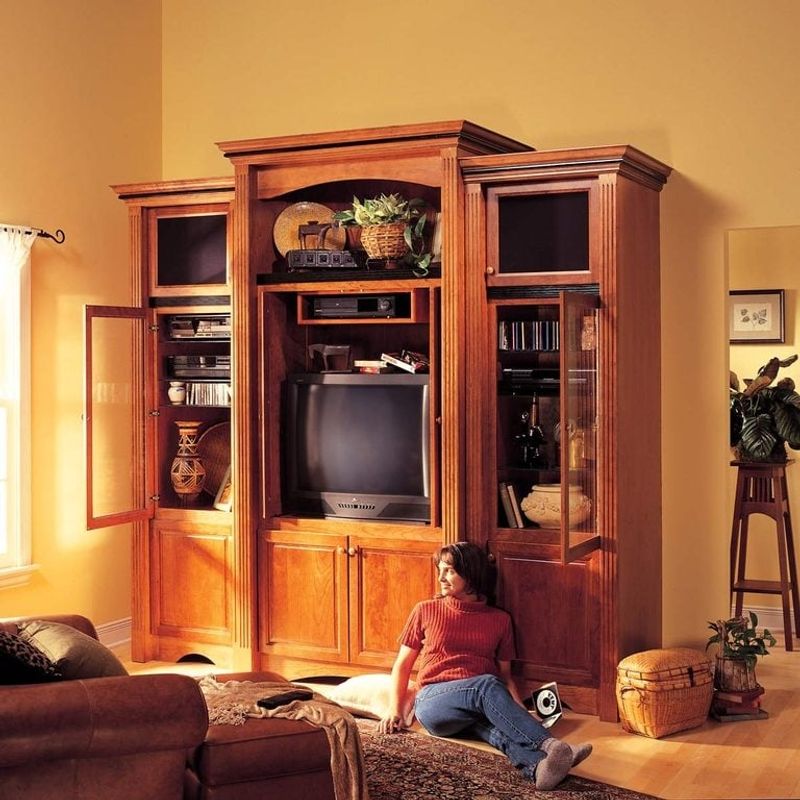
Massive wooden cabinets dominated living rooms, housing television sets, stereo components, and extensive VHS collections. Built-in shelving specifically sized for video cassettes kept movie libraries organized and displayed.
Many featured specialized compartments for record players, cassette decks, and even dedicated album storage. Glass doors protected expensive electronics while allowing remote controls to function, representing the technological hub of family life.
15. Telephone Nooks or Rotary Wall Phones in Kitchens
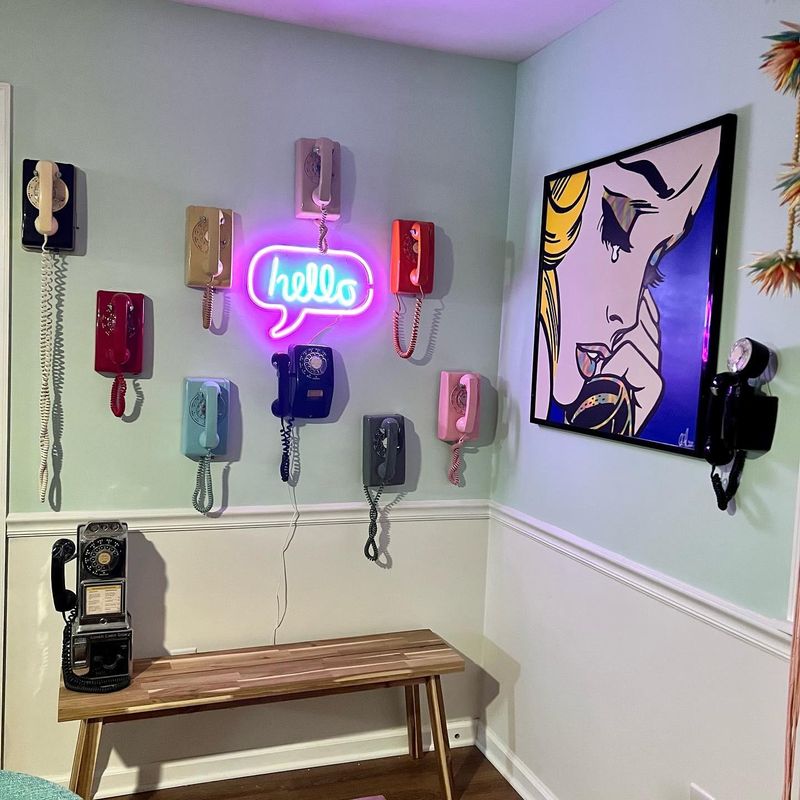
Small recessed areas in hallways held the family’s single telephone and phone book. Kitchen walls commonly featured wall-mounted phones with extra-long cords that stretched across rooms for private conversations.
Rotary dials gradually gave way to push-button technology, though the location remained consistent. Messages and important numbers were scribbled on nearby notepads, creating communication centers where family members gathered to chat with friends and relatives.

